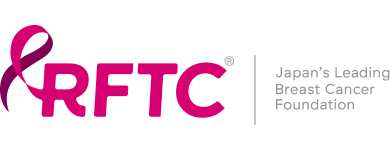
21 Jan Feeling The Heat – Hot Flushes and Breast Cancer

PiNK 2019 Winter p.8-p.9
Hot flushes caused by breast cancer treatment are distressing and all too common. But what are they, why do they happen, and what can you do about them?
Some treatments for breast cancer, such as chemotherapy and hormone therapy, can leave you with lower amounts of oestrogen in your body, which can cause menopausal symptoms. Hot flushes are one of the most commonly reported of these.
What are hot flushes?
A hot flush can be anything from a mild sensation of warming that just affects the face to waves of heat throughout the whole body. Some women find themselves drenched in perspiration. How often hot flushes happen varies from person to person – you could have a couple a day or a few every hour. Many women get flushes at night, which can disturb their sleep and leave them waking in a cold, damp sweat. This can be very disruptive, especially if you share a bed. And lack of sleep brings its own problems like forgetfulness, irritability and poor concentration.

What can you do?
You might feel that you should put up with hot flushes because they are a side effect of your breast cancer treatment.
But it’s important to tell your specialist team or GP as they may be able to help. There are various things you can try yourself to help manage hot flushes.
Know your triggers
Some women find certain things trigger their hot flushes, such as caffeine, alcohol and spicy food. It’s a good idea to keep a diary of when your flushes happen, to see if anything in particular is causing them or making them worse. This might help you know what to avoid in future.
Eating habits
Sometimes eating small meals regularly in stead of three meals a day can help. Cold drinks can also ease the flushes by cooling you down. If you are overweight, losing weight could help improve your symptoms too.
Talk to others
It can be useful to talk to other women who’ve experienced hot flushes. They might be able to offer some tips on coping, and sharing your own experience might help you to cope better too.

Six tips for managing hot flushes
- Wear loose-fitting, cotton clothing.
- Wear layers so you can remove clothing when a flush starts.
- Try a silk pillowcase, a cool pillow (‘chillow’) or a cooling scarf to keep you cool.
- Always keep a bottle of water with you.
- Carry a battery-operated fan.
- Keep a water spray with you containing a fragrance of your choice.
What can your specialist team do?
Your specialist team or GP may prescribe a non-hormonal drug to help with your hot flushes. However, these usually have some side effects and you might have to try different ones to see which one works for you.
・Anti-depressants
Several anti-depressants, including venlafaxine, citalopram and desvenlafaxine, can be prescribed for hot flushes. Possible side effects of these drugs include feeling sick, diarrhoea, sleepiness and dizziness.
・Clonidine
Clonidine is usually given for high blood pressure but it may help with hot flushes too. This drug can cause side effects like dry mouth, headaches, constipation and drowsiness.
・Gabapentin
This drug is usually used to treat chronic pain and epilepsy. Because gabapentin has a sedative effect it can be particularly helpful if you get hot flushes at night. Side effects include drowsiness, dizziness and nausea.
・Hormone replacement therapy (HRT)
Although it’s an effective treatment for menopausal symptoms, HRT is not usually recommended for women who’ve been diagnosed with breast
cancer. This is because there’s uncertainty about whether HRT increases the risk of breast cancer coming back. But if hot flushes are really affecting your quality of life, this treatment might be considered after a discussion with your specialist team.
・If you’re taking tamoxifen
Hot flushes are the most common side effect of tamoxifen. If you’ve already been through the menopause you may be able to switch to a different drug where this side effect is slightly less common. It’s worth asking your
specialist team if this is an option, particularly if you’re due to be on tamoxifen for a long time.
Natural therapies and phytoestrogens
Some women try using natural therapies like evening primrose oil, ginseng and St John’s Wort to help with hot flushes. Others try phytoestrogens – plant substances that have similar effects to oestrogens – such as red clover or soy supplements. There’s very little evidence that these work, and some supplements aren’t recommended for women who’ve had breast cancer.
Always tell your breast care nurse or specialist team if you’re thinking about using a supplement, to make sure it won’t affect any medical treatment.

Complementary therapies
Many women try complementary therapies. These might include hypnosis, acupuncture or meditation techniques.
Although the evidence about their effectiveness in relieving hot flushes is varied, some people find them helpful.










